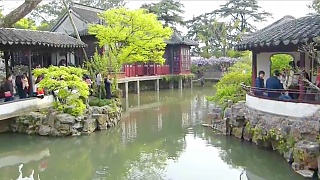
|
With Silberventures ...
ZhuHai Travel Guide
Overview
Zhuhai, located in southern Guangdong province, is a coastal city known for its beautiful islands, relaxed atmosphere, and proximity to Macau. It is often called the "City of a Hundred Islands" and is famous for its clean air, well-planned urban layout, and charming seaside attractions.
Top Attractions
Zhuhai Fisher Girl Statue: The city’s iconic landmark, located at Xianglu Bay, representing beauty and romance.
Chimelong Ocean Kingdom: One of the world’s largest ocean-themed parks with exciting rides, aquariums, and live animal shows.
Dong'ao Island: A scenic island with crystal-clear waters, perfect for relaxation and water sports.
Wailingding Island: A lesser-known but stunning island offering beautiful beaches and hiking trails.
Lovers’ Road: A picturesque coastal promenade ideal for walking or cycling while enjoying sea views.
New Yuanming Palace: A replica of Beijing’s Old Summer Palace, with classical Chinese gardens and cultural performances.
Zhuhai Grand Theatre: A unique shell-shaped architectural masterpiece hosting various performances.
Best Activities
Island Hopping: Visit islands like Hebao Island and Dong'ao Island for beaches and snorkeling.
Hot Springs: Relax in Imperial Hot Spring Resort for a rejuvenating experience.
Seafood Dining: Enjoy fresh seafood at Wanzai Seafood Street.
Macau Day Trip: Take a quick trip to Macau via the Hong Kong-Zhuhai-Macau Bridge.
Shopping
Gongbei Underground Shopping Mall: A great place for bargain shopping near the Macau border.
Huafa Mall: A modern shopping center with international brands.
Zhuhai Duty-Free Shops: Good for tax-free shopping on luxury goods.
Local Cuisine
Seafood: Try local specialties such as steamed crabs and salt-baked prawns.
Yufu Noodles: A famous local noodle dish.
Macanese Influence: Due to proximity to Macau, Macanese-style dishes are common.
Getting Around
Public Buses: Affordable and convenient for getting around the city.
Taxis & Ride-Sharing: Widely available, though it helps to have your destination in Chinese.
Bicycles & E-Scooters: Many areas are bike-friendly, especially along Lovers’ Road.
Best Time to Visit
Zhuhai has a subtropical climate, with mild winters and warm summers. The best time to visit is from October to April, when temperatures are comfortable and rainfall is low.
Where to Stay
Luxury: Chimelong Hengqin Bay Hotel, St. Regis Zhuhai.
Mid-Range: Sheraton Zhuhai Hotel, Palm Spring Hotel.
Budget: GreenTree Inn, 7 Days Inn.
|
 Nutrition – cholesterol, sodium and fructose (eggs, salt and sugar)
Nutrition – cholesterol, sodium and fructose (eggs, salt and sugar)































